By Renato Abramowicz Santos
This text is a simplified and edited version of a report produced for FAPESP (the São Paulo Research Foundation) following an exchange internship research scholarship (BEPE) carried out at UCLA (University of California – Los Angeles), in the United States, where I was received and welcomed at the UCLA Luskin Institute on Inequality and Democracy, under the supervision of Professor Ananya Roy (Fapesp project number: 2022/06583-7).
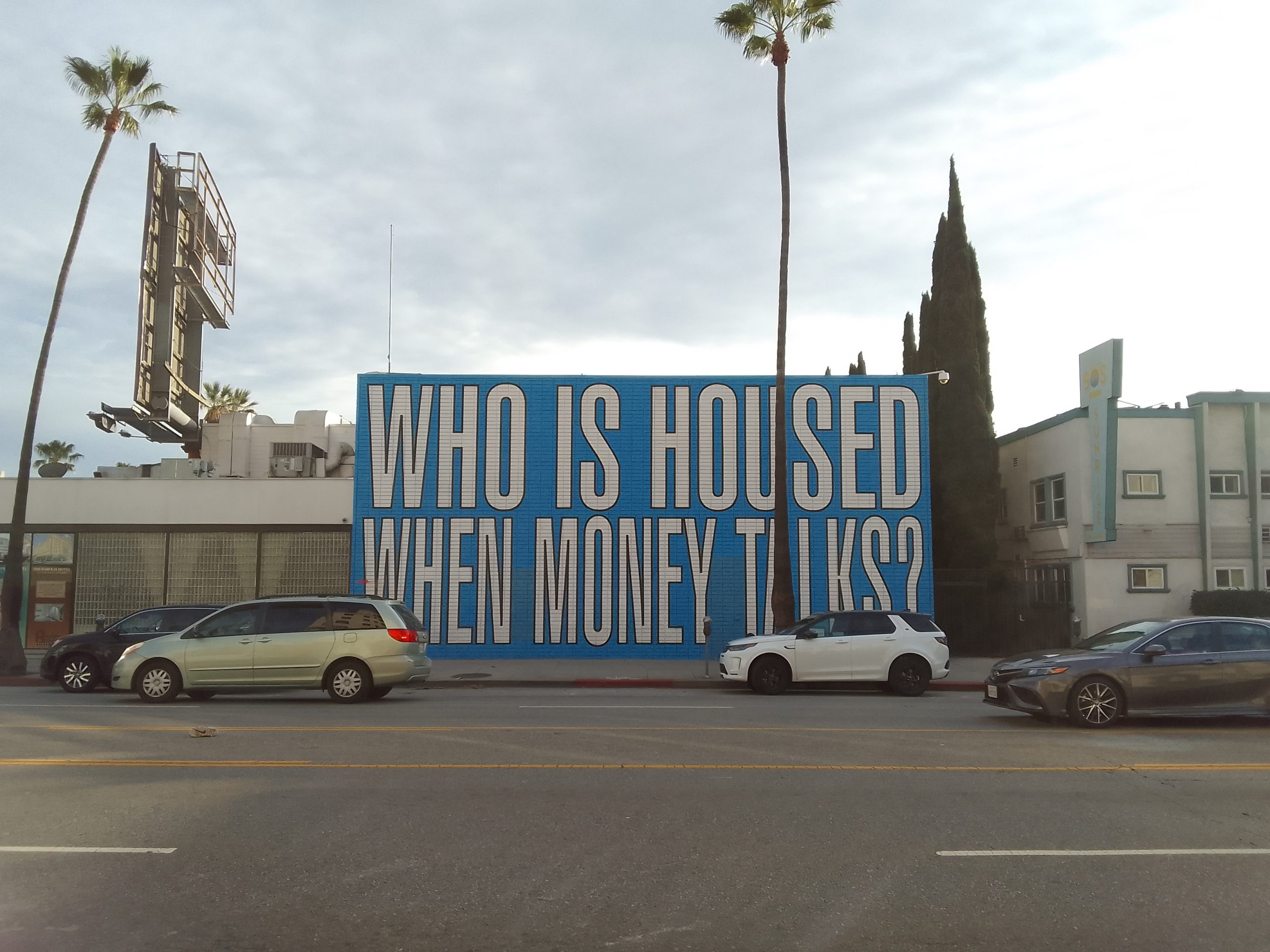
Under an intensely blue sky which stretches away broadly encompassing the horizon, illuminated by the sun that is always hot during the day – we better not forget this is the desert –, lies the city of Los Angeles, as far as the eye can see. Crossed by immense highways and freeways which pierce through its many and distinct regions, a city made to be traveled by car spreads out in a dispersed manner – its dimensions, mobility and circuits have been designed for vehicles, they are not on a human scale. It is fragmented into neighborhoods, counties and other small cities that begin and end in such a way that not many would be able to say exactly where their limits are, and that includes Angelinos themselves.
It is difficult to conceive a mental map that succeeds in covering the entire city or that would even go as far as giving a dimension of this ensemble with cohesion and consonance. A sprawling, low city (few tall buildings, with the exception of its central area), surrounded by a powerful nature made up of mountains, rocks, beaches, amid heat and intense light, filling us with the sensation that this dense urban agglomeration is a dystopian mirage in the middle of the desert.
When I designed the project to apply for a research grant in Los Angeles (LA) aiming to get in touch and investigate the processes and subjects who suffer and face threats of evictions, I was not aware that its most visible and immediate face and reality take shape in the large unhoused population – I learned that what in São Paulo we would call as “street level homelessness” could be politically designed as “unhoused” condition –, who occupy and live on streets in different areas of the city. Radically opposing the global, stellar and glittering image of Hollywood, Bel Air, Beverly Hills, and other regions that cultural products made known, there one finds, sharing these same walks of fame, a different urban and social reality, made up of thousands of men and women who turn their cars (those who own one) and their tents into their homes along the city’s wide and long boulevards, which they walk, pilgrimage, and where they try to remain.
By relating to and exchanging with LA collectives and movements that fight for the right to housing (some claim their fight as spatial justice) and against the various forms of violence affecting bodies and populations which are vulnerable, part of minorities and in some way marginalized by the order in force (or, at least, ideal of order), I was able to get in touch with the resistance, organization and mobilization strategies of some groups.
Like, for example, the LATU (Los Angeles Tenant Union), perhaps the broadest and most consolidated social movement linked to housing that I got to know during my stay; Just like the UTACH (Unhoused Tenants Against Carceral Housing, whose acronym resembles and suggests an “attack”, or better said, a counter-attack), formed and led by unhoused people (who are still or have at some point experienced this condition), which in addition to proposing policies that promote autonomy, security and respect for community and self-managed forms of housing, also seek to combat and denounce violations of rights and imprisonment conditions spread throughout the US social fabric in controlling, managing and repressing bodies and lives – not by chance, this spread and reproduction of punitive logics which find roots in imprisonment machinery and devices is classified by many as a continuum of carcerality.
Another current feature of the progressive collectives and spaces that I have found and attended that caught my attention was in relation to the fact that colonial criticism was very grounded and present, like the very floor on which one takes their steps and from which one departs. I had, in some way, followed the US discussions around issues and demands arising from the racial and feminist debate/perspective in Brazil and therefore had some idea (not a precise one, as they also proved to be more profound, consolidated and disseminated than I had imagined), but the critical review and reparation against the colonial history formalized by the “official” records of the United States, California, Los Angeles, and even by UCLA, surprised me.
I got to know these territories in which I was traveling and living and learned that they had belonged to other peoples (in the case of Los Angeles, the Tongva), cultures and traditions that over time had been systematically decimated, but with efforts and different undertakings (academic ones, as well) remain and resist – “This is Tongva Land” or “California is indigenous land” are some examples that I came across, as well as references and greetings to these ancestors and their descendants that are made in publications and activities carried out by the Institute that received me and also by activists and progressive academic groups in LA.
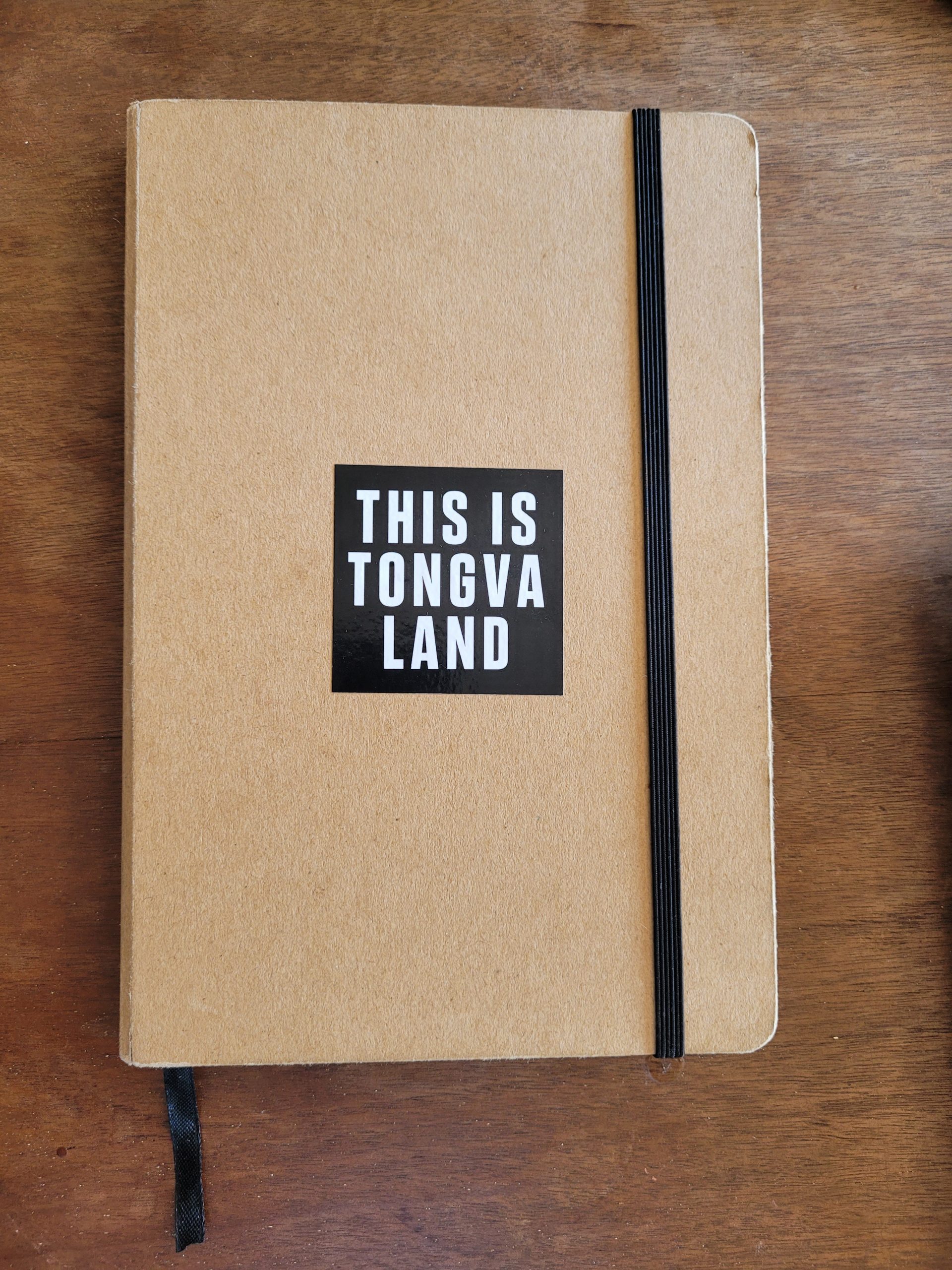
According to positions taking the critical perspective on the long and brutal process of colonization and dispossession of native peoples, there is an immediate and evident line of continuity that links the colonization and subjugation of bodies, on the one hand, of the natural resources, on the other hand. Throughout the colonization, these processes are two sides of the same coin, being part of the same logic and enterprise: the domination, domestication and exploitation of “wilderness” forces, as we may read in Charles Sepulveda’s text, “Our Sacred Waters: Theorizing Kuuyam as Decolonial Possibility”.
And through the continuity of the processes of exploitation, not only the mentality is perpetuated and updated, but so is colonial violence in contemporary times: this colonial continuation and re-actualization highlights and marks post-colonialism as “the afterlife” of colonialism, according to Roy, meaning that its existence, legacy and effects are still alive and current. From Sepuvelda’s perspective, confrontations and resistance continue, showing, indeed, that struggles for the liberation of peoples, cultures and bodies must be carried out – it is only reasonable that they are carried out – paired with the defense of natural resources and territories: if the process of domination is one, so should be the struggles for liberation.
Throughout all these exchanges and coexistence, another demand from some of these LA groups that I got in touch with left me, at first, disconcerted and confused: it was for the “right to informal settlements”. I could not understand this demand when many of the efforts of groups, squatting buildings and social movements in Brazil are for formalization and institutionalization. I did not understand this demand because the paradigm that governs the United States is of another kind, different from Tours; according to Ananya Roy, the current paradigm there is that of “propertied citizenship” (the reference text here is “Paradigms of propertied citizenship”, from 2003).
In order to describe and think about the different paradigms operating in São Paulo/Brazil and Los Angeles/USA, the exercise proposed here follows the methodological and epistemological guidance also provided by Roy in the same text, which she calls “transnationalism”. Used as an “interrogative technique” of analysis, it is not about comparative methodologies in the sense of looking and opposing similarities and differences of two different exclusive contexts, but about “using one place to ask questions to another”: making questions from the South to the North Global. Taking care, she warns, not to establish a “utopian celebration” of the peripheries of capitalism in this dynamic – in other words, not to romanticize poverty.
As much as these paradigms function as models, they also organize systems of values and norms, which are applied and extended in everyday practical life, and which help to understand and explain the ways in which citizenship – and the relationship between individuals and the State – is constituted. According to Roy’s analysis, the paradigm that prevails in the USA is that of “propertied citizenship” because it is around property (and possession), being an owner or not, that it is established, organized and that access to rights is guaranteed – or not.
According to her, “the American paradigm of propertied citizenship makes few concessions for the poor, turning the propertyless into the shelterless. In contrast, the Third World paradigm rejects the marginality of the poor, giving legitimacy to the shelter claims of the propertyless” (p.473).
And these differences evidently cause distinct social and political effects: if in the paradigm in force at the South Global, there are consolidated recognition and space for the demands for housing that the various informal housing arrangements adapt themselves to try to meet and fulfill, not necessarily these diverse demands and informal arrangements will constitute full and effective rights – a squatting may spend years waiting for full property rights.
And, if on the one hand, there is space for recognition of demands for rights and different housing arrangements, on the other hand, this expectation and waiting may become a mode of existence and political functioning: it enables and allows paralysis, accommodation and, in a certain way, some conservatism; it conditions and triggers dependence, space for negotiations and bargains, and, therefore, “populist dynamics” and political clientelism; and, at the limit, using another text and analysis by Roy, they constitute a mode of government, the “civic governmentality” of populations and territories forged in the dis/agreements and dis/settlements of the varied spectrums of in/formality, produced to be governable, and the efforts to circumvent and escape these management and control devices.
In the US “propertied citizenship paradigm”, the precept that governs access to housing establishes that any shelter must be safe and “sanitary”, which makes it unfeasible and eliminates the option and vulnerabilities linked to informal housing, still according to the same author. In the US parameter, not being an owner means an exclusion of rights that may result in a lack of housing options, making people have to live in cars (when they have one) or in tents on the street.
That is not to say that, on the one hand, there are no precarious housing options and high housing density in a same residence in the USA; nor that, on the other hand, the normative force (and valuation, including the moral one) surrounding “sanitary” and security are not active in Brazilian ideology, or even that the importance of private property (including as a social desire) is not equally operative and determining in Brazil.
These elements also structure not only the constitution and functioning of hegemonic urban planning in Brazilian cities, but are part of the very logic of space production promoted and led by the State. It is constituent of its discretionary action in determining the territories that are inside (and outside) the order, its margins, and the (il)legalities and (il)legitimacies of spaces and practices, as well as of the distinction between what can remain, what must be eliminated, and also what remains in suspension and indeterminacy. These are all resources and sources of power for the State, as taught by Roy, in another text, and also by Raquel Rolnik.
Based on the research I had carried out in São Paulo and facing the reality I encountered in Los Angeles and the discussions I got involved in, it was possible to perceive and conceive informality as a kind of “protective cushion”, enabling and producing different and diverse arrangements of ways of living. In the Global South, even without being a homeowner, one may find consolidated space and legitimacy to claim for their rights. In this sense, it became possible to better understand why some groups in Los Angeles demand the “right to informal settlements” in order to expand the range of housing options for non-homeowners.
And also, as presented by Roy in a lesson which was part of a collaborative and community course she taught at UCLA along with postgraduate students, researchers, activists, social movement leaders and unhoused people, which I had the opportunity to follow while there, to claim the “right to informal settlements” is also a possibility in favor of the autonomy and self-management of communities. It is a way of guaranteeing services to these settlements, as well as rights and the protection of the law to these ways of living, as they are recognized as such. Therefore, a process that seeks rights, protection and recognition.
There is a point which is linked to these questions that I will not have space to further develop and explore here: the displacements produced by processes of dispossession and other types of violence enable and put in movement, contact and connection (and friction) different territories, social groups and repertoires. In its turn, this “mixture” produces other and new ones (spaces, circuits, groups, repertoires), at least as observed in the city of São Paulo.
The question is which movements and circuits are constituted and made possible through dispossession and displacement in a society in which informality is not a paradigm (and, by extension, institutionality and institutionalization are not resource and horizon)? What circulation, contact (and possible clashes), new arrangements and agencies does the paradigm of propertied citizenship produce?
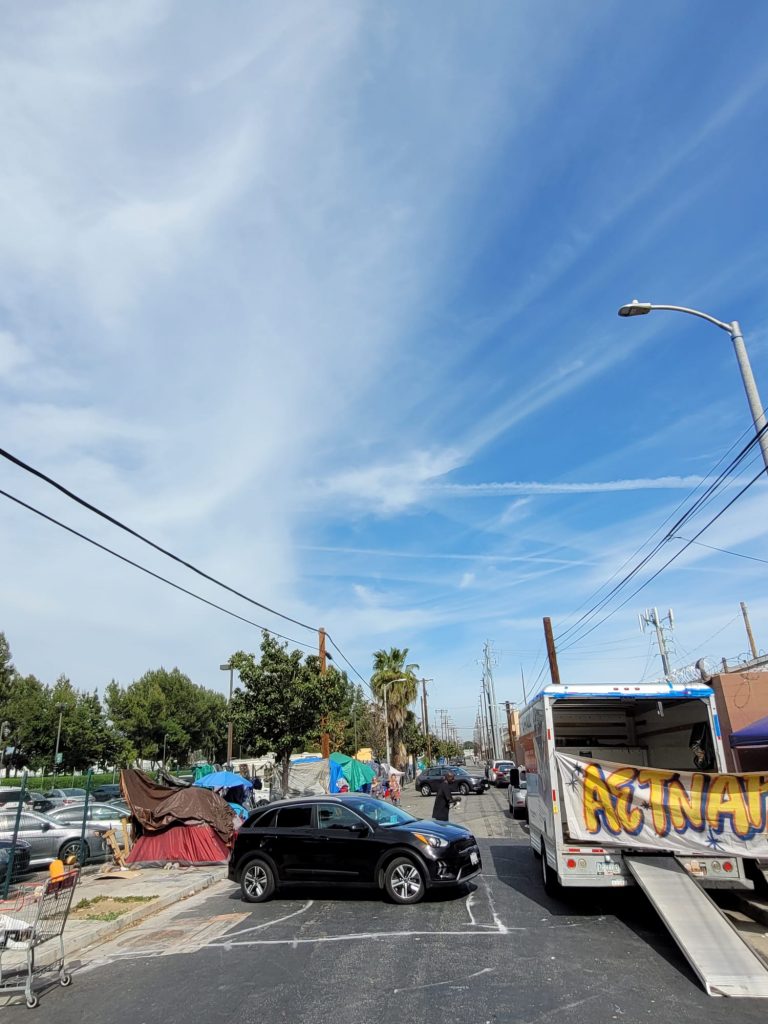
There is one last element related to political strategies I would like to mention. It refers to practices that I got in touch with and also were source of some discussions around what LA activist collectives carry out and call by mutual aid. The action consists of a series of tactics and practices that, according to David Spade’s text “Solidarity Not Charity – Mutual Aid for Mobilization and Survival” (2020), seek to: be democratic and horizontal; provide material relief to impacted and somehow vulnerable populations; dismantle systems and dynamics of oppression; mobilize people, especially those most affected, to take part in present and future struggles; and more than reforming, affecting and transforming the causes and conditions of harmful situations.
Over my months in Los Angeles, I have attended several mutual aid activities on different days and in different territories and spaces around the city, where clothes, food, harm reduction instruments, information, meditation, art and culture were shared. One of the objectives is that contact and exchanges are established in this process and practice, and that distinct and varied circuits and relationships between people, territories and affections are produced.
In a more general and broader way, not only linked to mutual aid activities, but worth the mention due to presence, recurrence and emphasis given in speeches and various activities, there’s the political objective (and the effort around it) of making and building communities. Experiencing and participating in the construction of communities – built on the power of the diversity of its members and their different origins, experiences and repertoires – is a valuable lesson that I learned from this trip and carry with me.
David Spade’s text, read as part of the bibliography of the collaborative and community course we had at UCLA, helped me to better and more deeply understand the organizational and political precepts that support for LA collectives the practice of mutual aid and which, in the author’s view, are different from charity. Also, the explanation that its use is a common and frequent practice in post-traumatic situations and events, such as natural disasters, helped me to better visualize and comprehend what was in front of me. I was able to understand it better, and then the explanation that this technology seeks to forge and establish “alternative infrastructures” made even more sense. This made more concrete and intelligible the actions of activists and collectives organizing themselves to create and develop resources and possibilities denied or non-existent by the State.
From this information and knowledge, some elaborations and questions emerged. The question of whether mutual aid would be the political practice of individuals trying to organize themselves in a stateless society or whether it would be the possible political action in a post-collapse/post-disaster world brings to light that the construction of “alternative infrastructures” is important in both scenarios, causing another question to arise: are a stateless society and a post-collapse world two sides of the same coin or different stages of an ongoing process?
In this sense, the practice and political strategy of mutual aid carry lessons to be learned as a kind of preview and anticipation of living and having to survive “through the end” – I believe that because of this, I could sense a dystopian atmosphere in the urban life of the world of mutual aid in Los Angeles. Living and surviving “through the end” also echoes the work of Anna Tsing (2014) – “Ruins are now our gardens. Degraded (“blasted”) landscapes produced our livelihoods”. It is important to notice that the world has already ended – and restarted – other times for many peoples and cultures, throughout history.
Perhaps “stateless society” is not the accurate term. What I am referring to and trying to describe is a society in which public institutions, services and resources, for the vast majority of the population, are scarce, absent or present in a mediated way, through either violence or some kind of capital. The more correct term may would be “deinstitutionalized”, in a sense of a lack of institutional mediations and resources. On the other hand, when institutions are present, most of the time, their presence reproduces and replaces punitive and control dynamics, having prison as one of their pillars, as pointed out by the UTACH collective and by the conception of the continuum of carcerality, as already mentioned.
It is not possible to talk about a lack of State in the USA because the armed (and brutal) face of this State is very present and organized at borders, airports, in the police force and in everyday policies against marginalized, vulnerable and non-white populations. These policies of control, repression and policing are constituted in a territorially and racially articulated and interlocked way, as described and analyzed by Roy, Graziani and Stephens (2020) – an exercise seeking to describe and analyze the Cracolândia region of São Paulo based on the territorialized and racialized policies (and police forces) of the State was done here.
Mutual aid seems to become the political practice in a society without a welfare state (but yes a police one) in which post-collapse seems to be the reality – a society in permanent and never-ending war, a continuous civil war that updates itself. Brazil also has a constant internal violence that is perpetuated, but is different given the fact that the State, its resources and policies are very present in the terms of the dispute, framing it and even being targets of it, which greatly conditions the action and strategy of different Brazilian social and political groups and movements.
Exercising once again the transnational analysis that Roy proposes, not to generate a point-by-point comparison or to think in terms of “better” and “worse”, but so that issues from one place illuminate and produce rearrangements in another, I take the risk to briefly elaborate on these dynamics and their possible political risks.
As mentioned, there are many Brazilian movements and collectives that have their political strategies oriented towards the State, whether in the shape of resistance to its policies, or to negotiate and appropriate its resources – as well as we also have here an entire autonomist practice and tradition too. The political strategy oriented towards the State, its arenas and resources, often carries the risk of accommodation, in addition to tending to constitute, limit and guide the instances, terms and instruments in which disputes often take place.
I wonder what would be the possible risks surrounding a much more autonomous and horizontal strategy like mutual aid. In my opinion and in a reflection that needs more time and depth, non-State-centered and autonomous mutual aid strategies that I met and followed in LA carry another type of risk: what one may in Portuguese call voluntarism [voluntarismo] – specific individual actions carried out by well-intentioned individuals. In the face of aridity and brutality, these are important, but because they do not necessarily build broader networks and political horizons, such actions could end up restricted in space and time.
Mutual aid activities without broader political connections and perspectives end up becoming punctual and locally circumscribed. This can be aggravated by another element – also very present and active in the Brazilian urban and social situation – which is the timeline of urgency: doing things in a timeline of urgency makes it difficult to build and articulate deeper and broader political actions.
Another risk that also arises from these: it is one thing to build alternative infrastructure, maintaining it is another. Building alternative infrastructures also means maintaining and managing them – and the communities receiving mutual aid activities may sometimes lack time, resources and capabilities (technical, informational, of energy, also because they live in the midst of urgency and difficult conditions) to be able to self-maintain and manage these infrastructures, not being able to make them remain and last in space and time beyond the activities carried out specifically on a given day and moment.
In a strong and radical consumer society such as the USA (much deeper and more democratic than Brazil – perhaps the most democratic dimension of citizenship that exists there) in which all individuals can be consumers (even unhoused people can access and navigate the circuits of consumption), the challenge seems to be how to overcome the individual perspective and build something that can go further. How can we ensure mutual aid is not captured and dominated by this logic? How can we avoid this to become just individuals working with individuals – or even worse: individuals working for individuals?
In my view, it is with these background questions that the demand for the “right to informal settlements” may gain new and important dimensions: the right to informality become a political process in the sense of producing politicization and subjectivation; the process of claiming rights, which is precisely a constituent mark of informality, as taught by Roy, becomes the enabler and activator of a political process of politicization and subjectivation of those involved in these claims and struggles.
The political bet of some of these LA collectives seems to be that by demanding rights (even if the right to informality), individuals become politicized, and thus become political and collective subjects, building alternative social and subjective infrastructures: more collective, able to go beyond the limitations and restrictions of the dimension, needs and desires of the individual-consumer subject. The individuals of a stateless society (but, at the same time, heavily consumerist) become political subjects in a process of politicization connected to the demand for rights. More than a “protection cushion”, informality enables a process of politicization and subjectivation in the course of production of some citizenship, rights and spaces – I wonder if some institutionality too. This understanding around the claim for the right to informality came from Ananya Roy’s dialogue and presentation at meetings and in her classes – with permanent attention and care not to romanticize informality in this process.
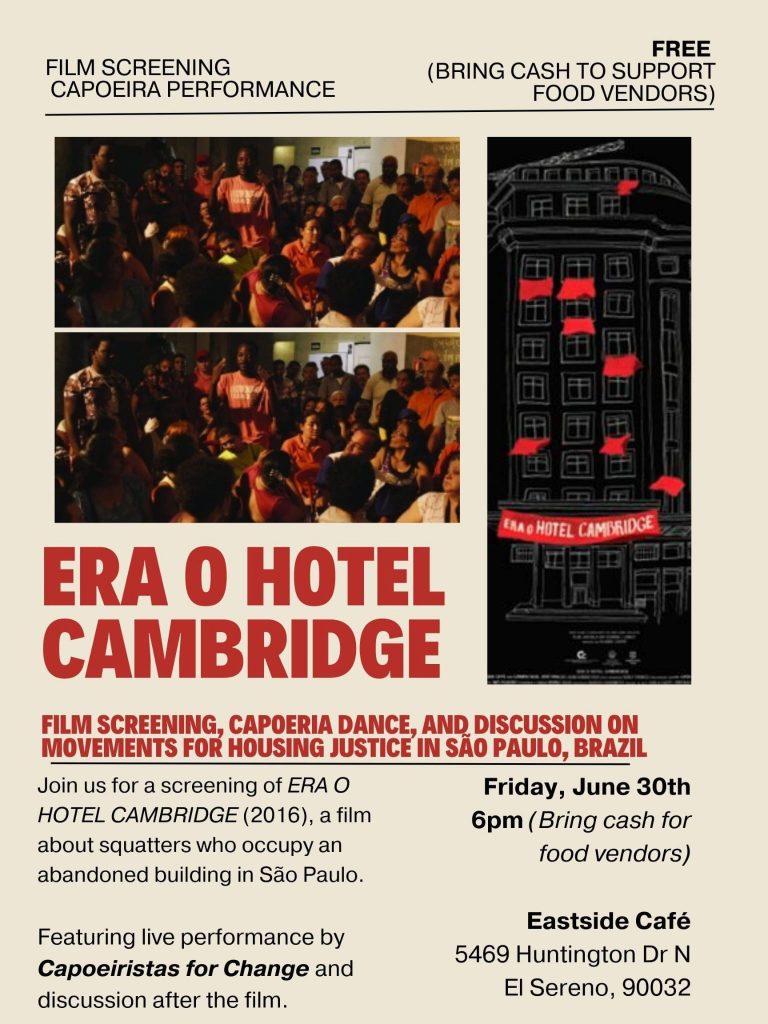
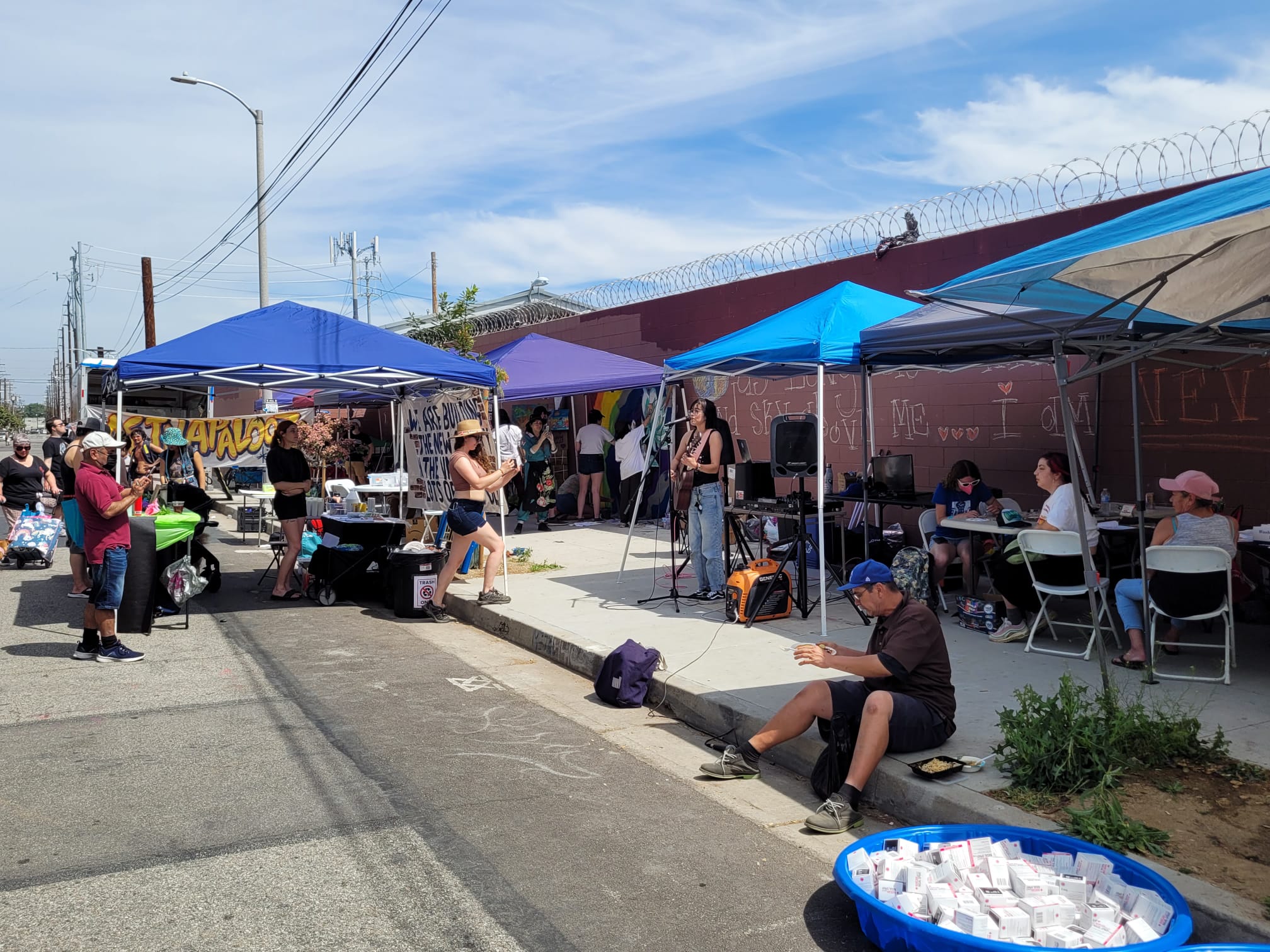
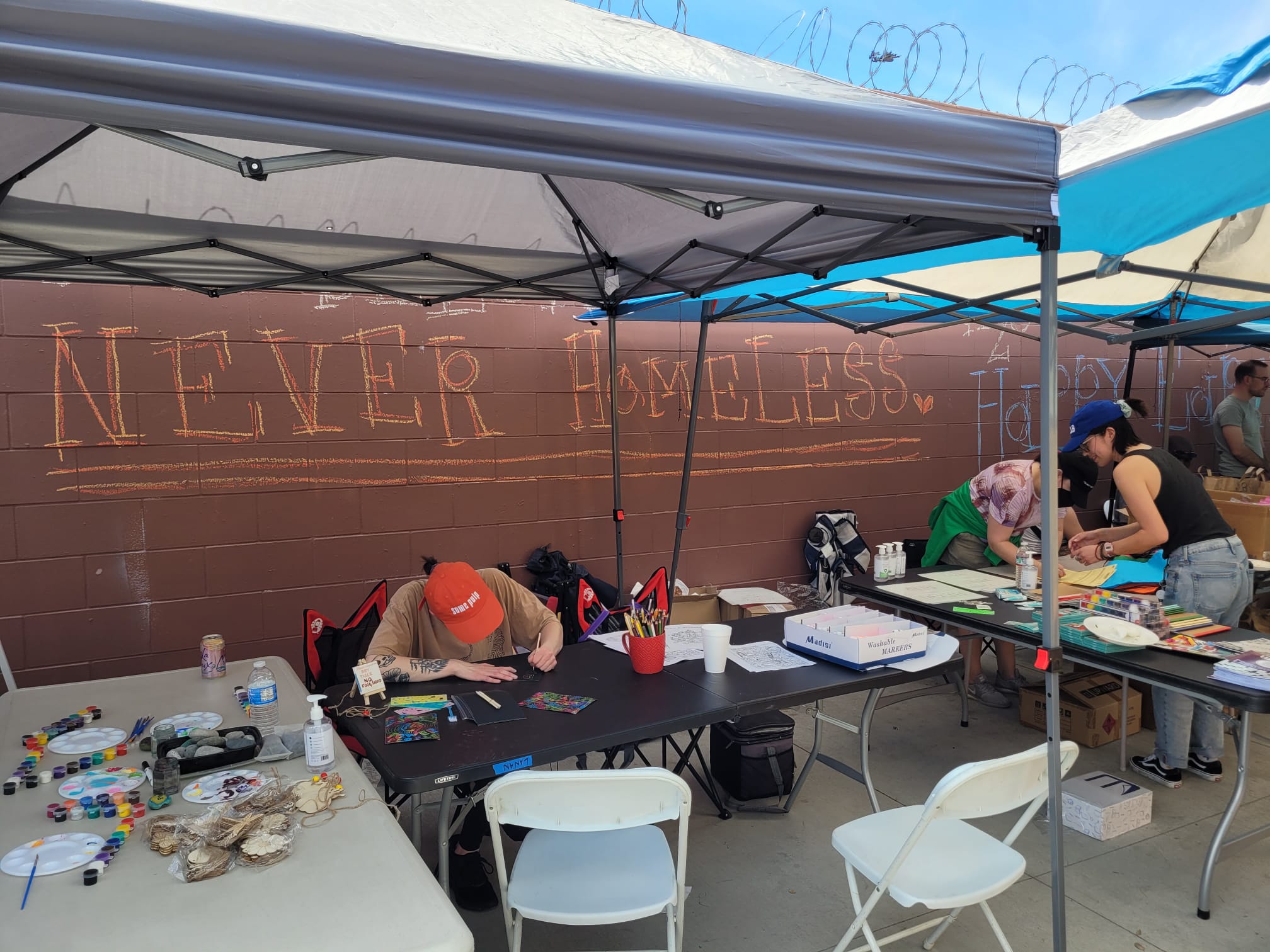
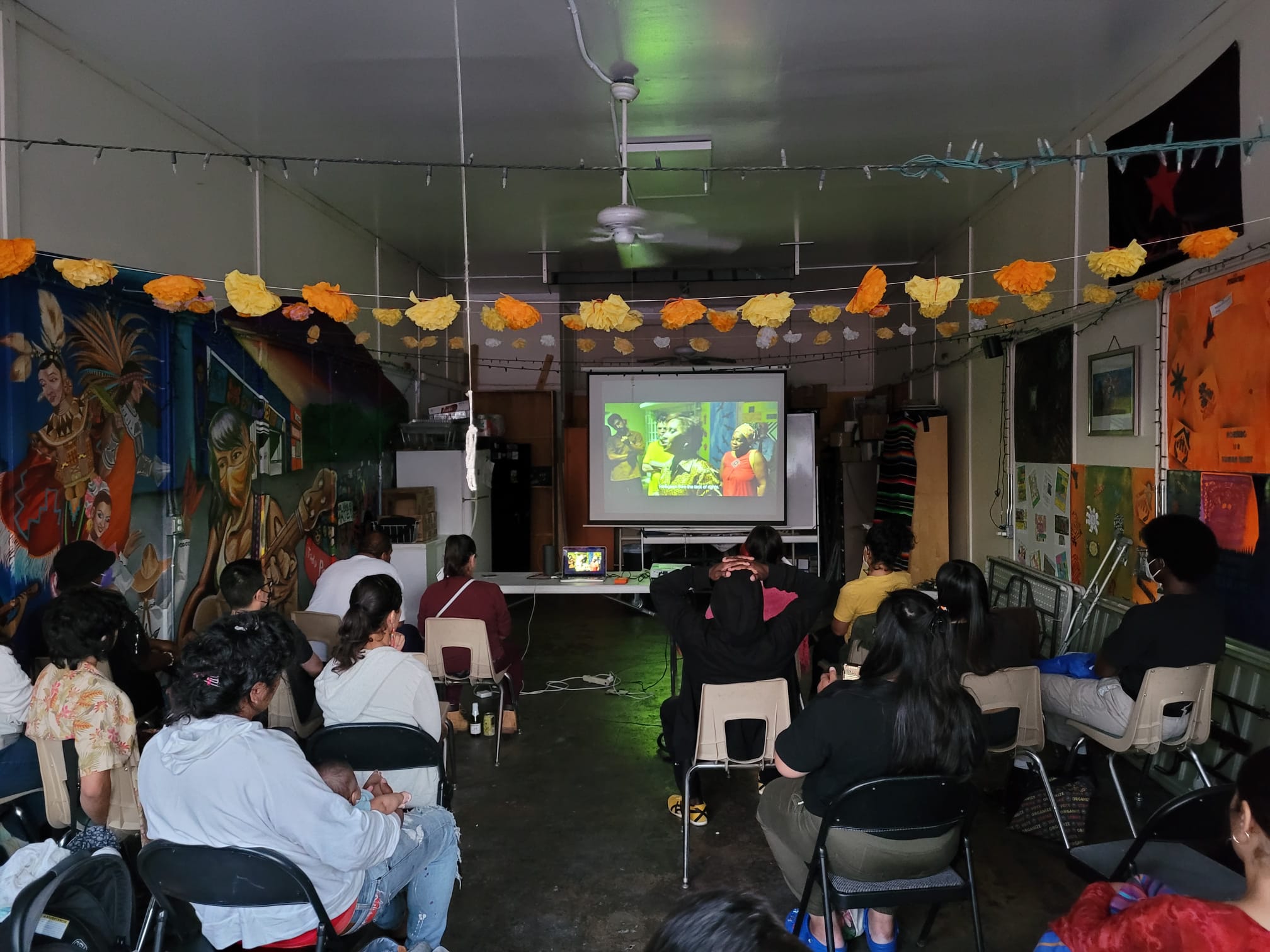
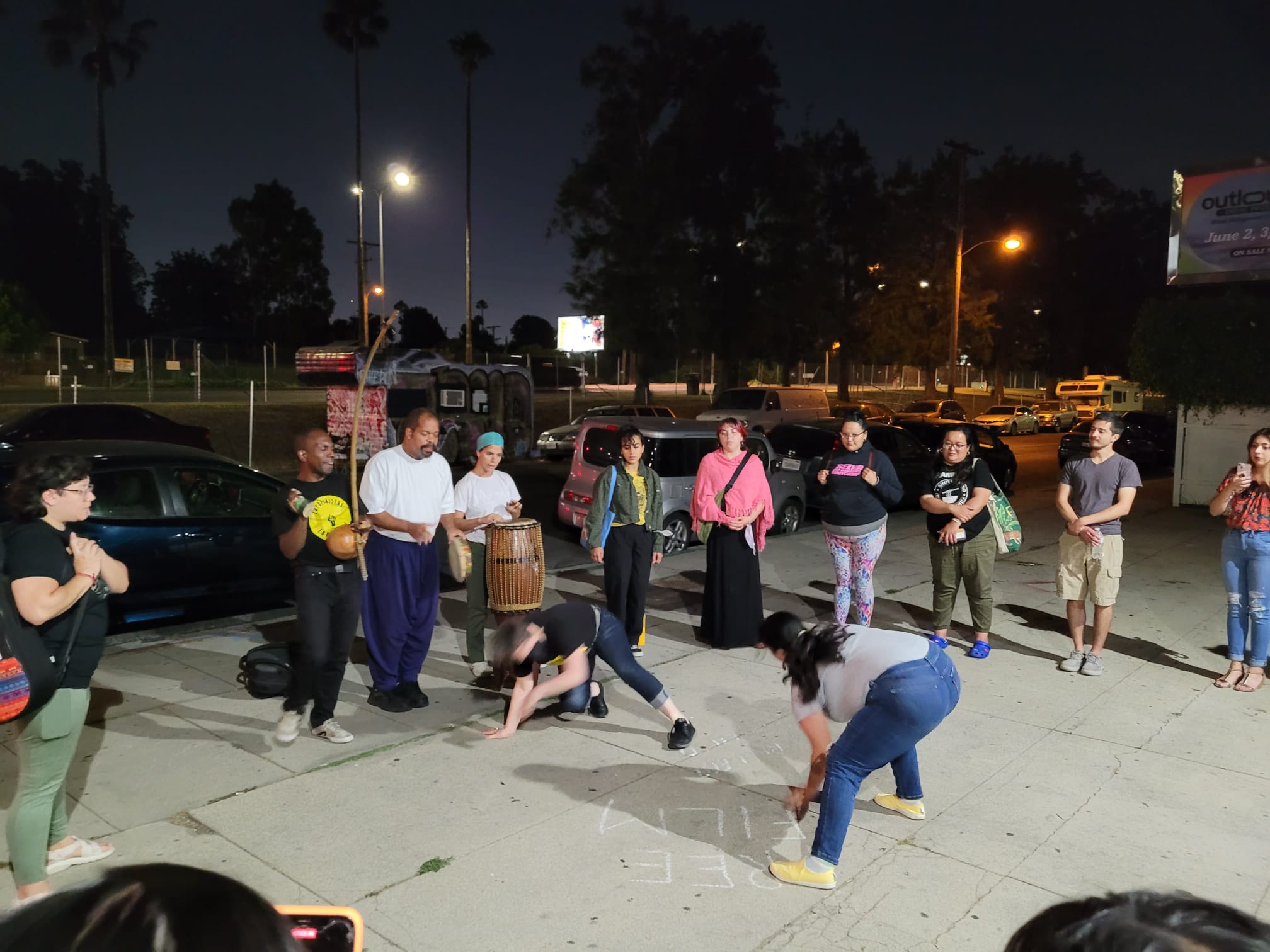
Comments are closed for this post.